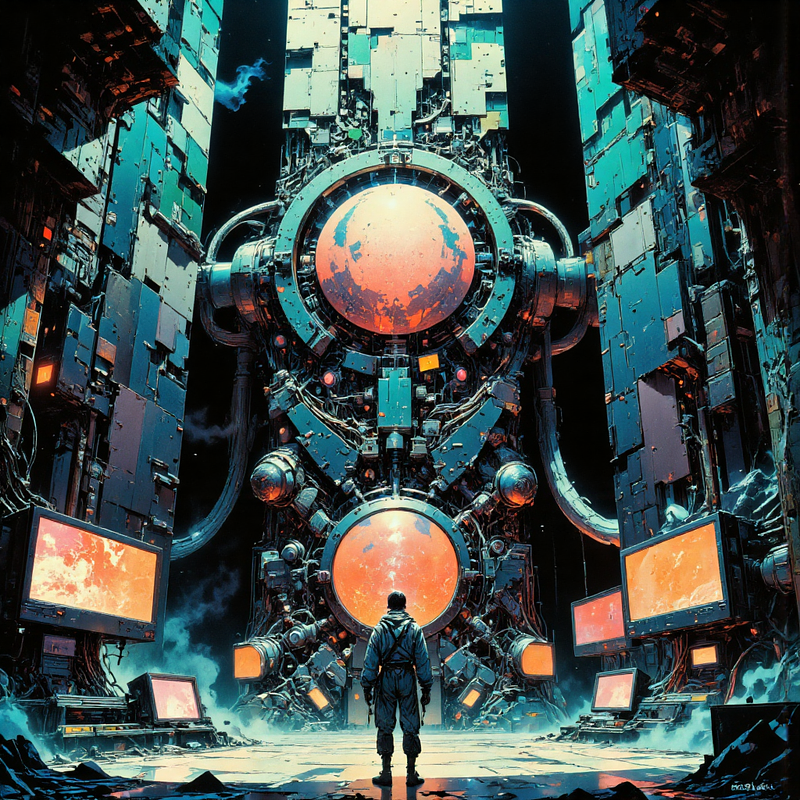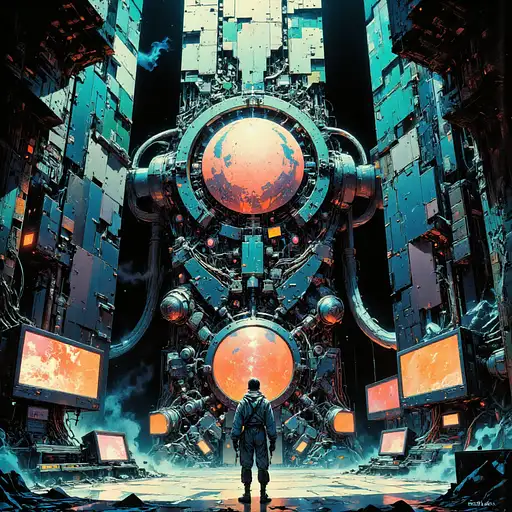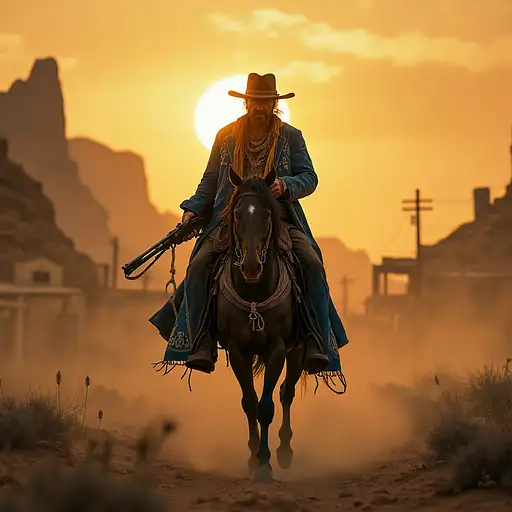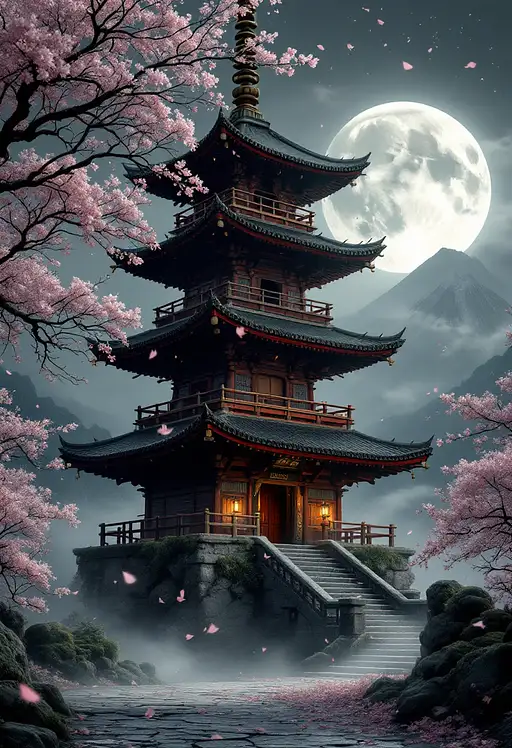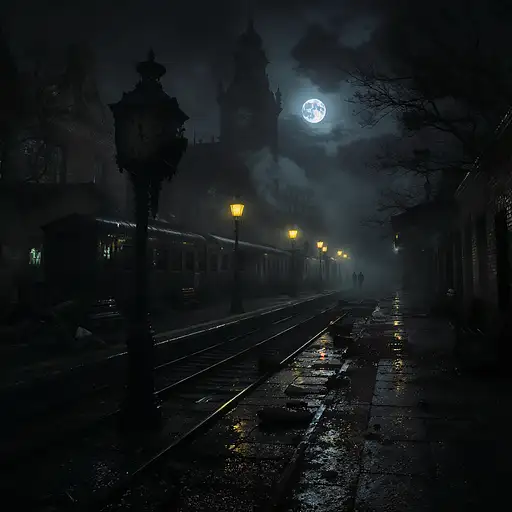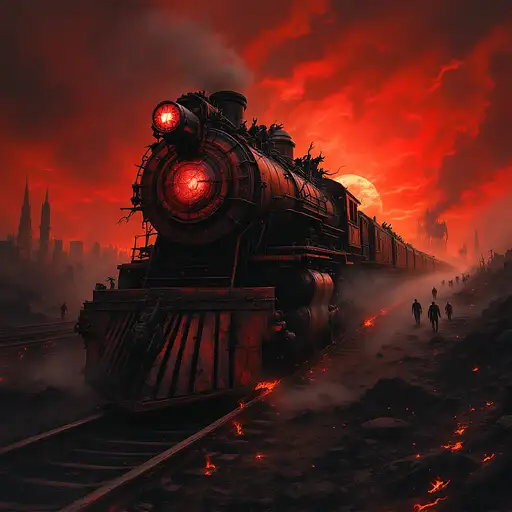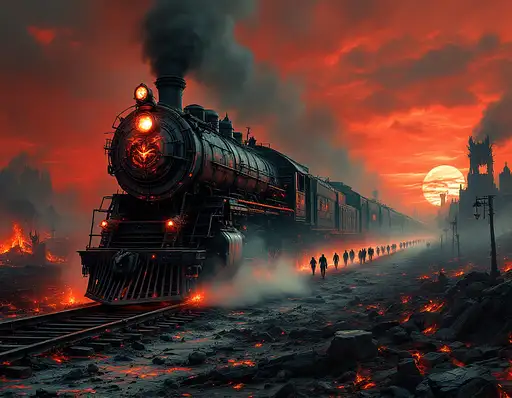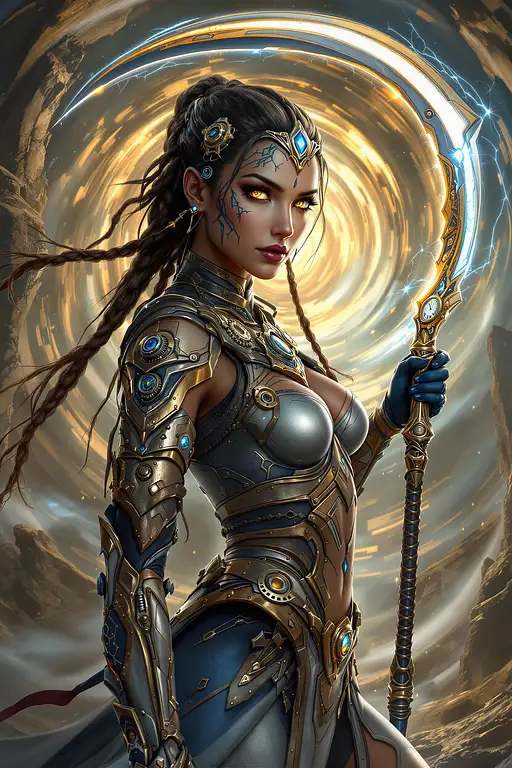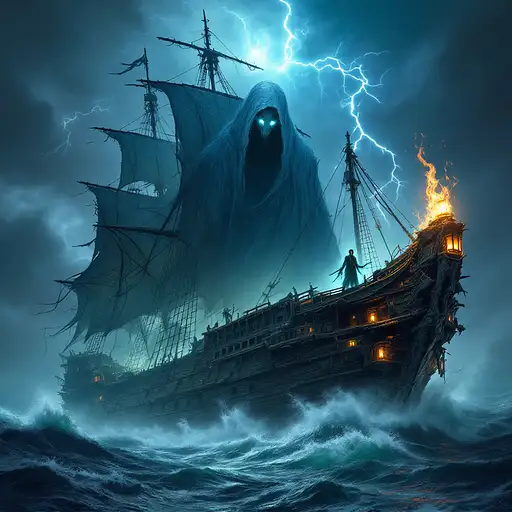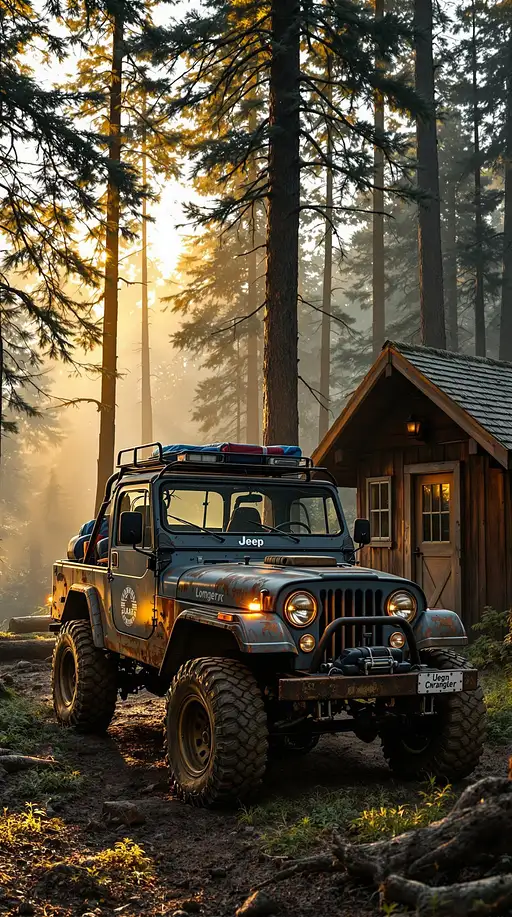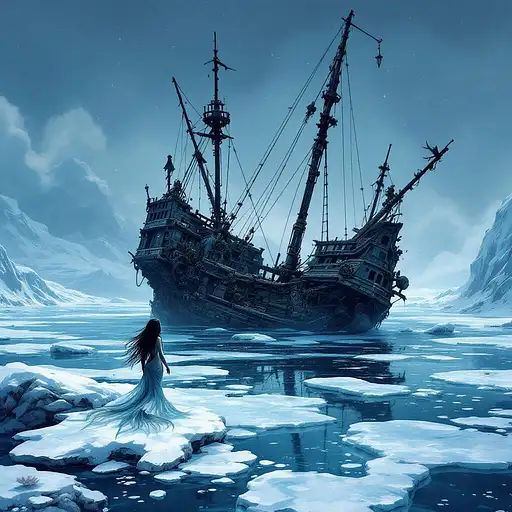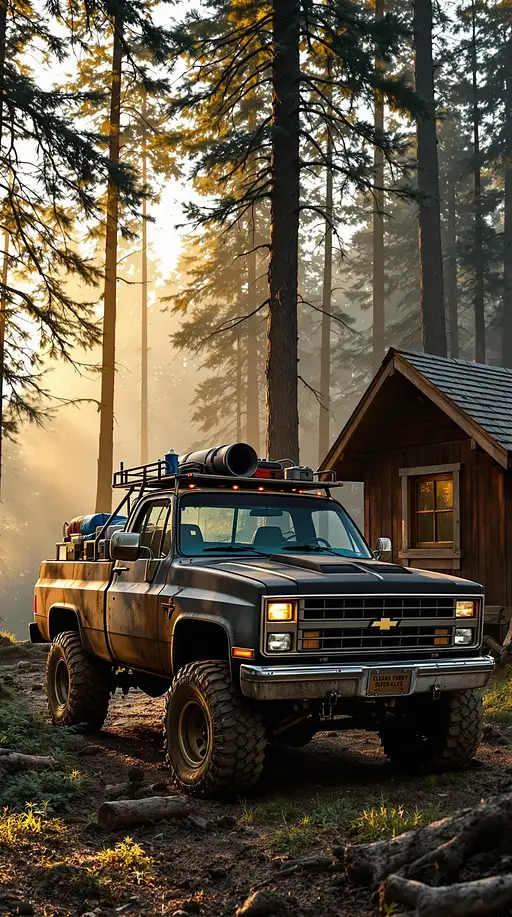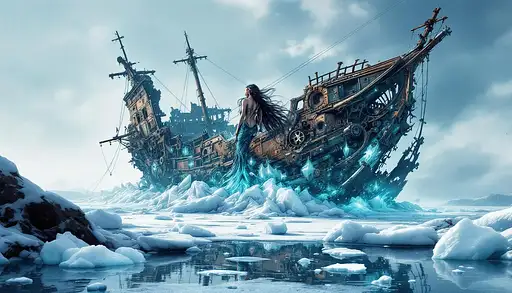8 months ago
(Spaghetti Western meets Hindu Mythology, Cinematic, Gritty, Mythic Americana, Clint Eastwood's Unforgiven-style storytelling, Hyperreal, Dust and Gunpowder, Sunset Over the Frontier)
(Gritty Cinematic Western:1.8, Hindu Mythology Meets Old West:2.0, Dust & Heat Haze:1.6, Sunburnt Leather & Weathered Cloth:1.5, Volumetric Light Through Dust:1.4, Classic Spaghetti Western Composition:1.8)
The frontier is vast, endless. The sun hangs low and swollen, a burning red eye sinking behind the jagged silhouette of the mountains, bleeding golden light across the dust-choked sky. A lone rider moves through the haze, his dark stallion kicking up a slow trail of dust, the sound of hooves muffled by the dry, cracked earth. Vishnu, the Divine Gunslinger, moves like a ghost through this godforsaken land, his presence a whisper on the wind, a warning before the storm.
He is adorned in a weathered duster, its deep blue fabric threadbare yet regal, embroidered in golden Sanskrit that shifts and shimmers under the dying light. Beneath it, his celestial skin glows faintly, a blue so deep it seems carved from the twilight sky itself. His golden eyes burn like twin desert suns, reflecting the fire of the West, the violence of the frontier, the weight of justice balanced on the edge of a blade.
From beneath his coat, his four arms rest with an unnatural stillness, each poised for retribution. One hand grips the Sudarshana Revolver, an ancient pistol forged from the molten core of a dying star, its barrel etched with the shifting symbols of the cosmos. Another holds a coiled lasso woven from the threads of fate, glowing with the light of constellations long dead. The third hand remains open, palm outward—a warning, or perhaps a blessing. The fourth clutches the eternal lotus, a reminder that even in this land of dust and death, something divine lingers.
Behind him, the town of Black Hollow waits, a rotting wooden carcass of a town, its saloon doors swaying in the wind, the church bell rusted and long silent. Shadows move behind glassless windows, fear tightening in the chests of men who know their reckoning has come. The outlaws of this place have no gods, no law but steel and blood, and yet even they whisper his name.
The wind shifts, carrying the scent of gunpowder and sagebrush, and in the distance, a gang of riders appear on the ridge, silhouetted against the sun. Their leader spits, grips his rifle, and laughs. "Ain't no man gets to play god out here," he sneers.
The six-shooter spins once, slow, deliberate. A single breath. A moment stretched between eternity and the dust. Vishnu narrows his golden gaze beneath the wide brim of his hat. He speaks only once.
"God don’t play, friend."
Then the world moves like lightning, like judgment, like fate itself unfurling.

